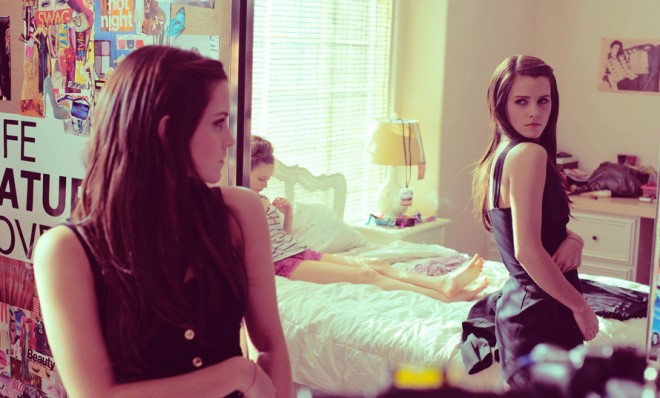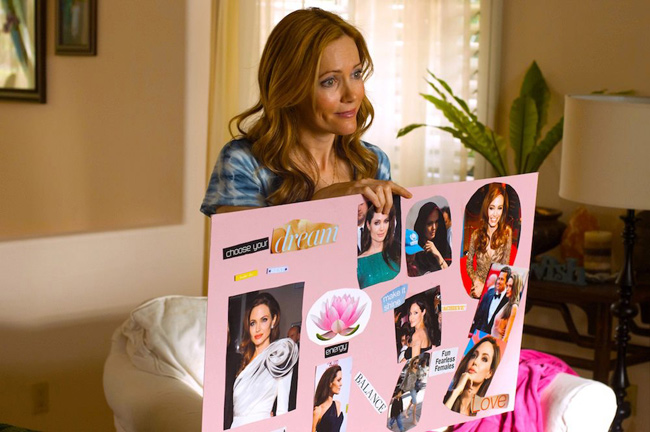Girls on Film: The Bling Ring is about all of us
As Sofia Coppola's new film shows, we no longer care about having experiences. It's all about documenting them so obsessively we don't realize we're having them


Since she debuted as a filmmaker in 1999 with The Virgin Suicides, director Sofia Coppola's art, and the motives behind it, have bedeviled many critics. Many have pointed to Coppola's family as inspiration. She's the daughter of legendary filmmaker Francis Ford Coppola and documentarian Eleanor Coppola, and she was born during the making of The Godfather, which many still hold to be the greatest film of all time.
This theory makes Coppola seem, symbolically at least, like the physical and spiritual product of cinema — and a woman destined to evolve within it. An early leading role in The Godfather Part III led to widespread criticism, marking her as the figure of "doom" who ruined her father's big comeback. But a transition to directing proved more fruitful; just four years after The Virgin Suicides marked her feature debut, she became the third woman in history to earn a Best Director Oscar nomination, with Lost in Translation.
Even after her Oscar nomination, Coppola's works have almost always been viewed through an autobiographical lens. With the arrival of 2010's Somewhere — the story of a celebrity whose daughter rips him out of his own suffocating ennui — the parallels seemed obvious. In a career retrospective in 2010, Slate's Nathan Heller wrote that Coppola's films "are striking for their steadfast, targeted attack on the culture of Hollywood. And although this common thread at first looks incidental to her project, it runs to the heart of her divisive reputation." The idea seems further bolstered by this month's The Bling Ring — an adaptation of the Vanity Fair article "The Suspects Wore Louboutins," which recounts the true story of a group of privileged teenagers who stole from the rich and famous in an attempt to be closer to the celebrities they were obsessed with.
The Week
Escape your echo chamber. Get the facts behind the news, plus analysis from multiple perspectives.

Sign up for The Week's Free Newsletters
From our morning news briefing to a weekly Good News Newsletter, get the best of The Week delivered directly to your inbox.
From our morning news briefing to a weekly Good News Newsletter, get the best of The Week delivered directly to your inbox.
But The Bling Ring's naysayers — who have called the film "unsatisfying," "shallow," "flimsy," "vapid," "banal," and "empty" — have unintentionally begun to get at the heart of both the film's beauty and the overarching theme of Coppola's work: The quest for true self-identity — not just for teenagers immersed in Hollywood culture, but for anyone, anywhere.
In The Bling Ring, Coppola is the cinematic anthropologist investigating the effects of modern culture and replication. Inundated with the minutia of celebrity life and sloppy morality, privileged teens steal opulence from figures like Paris Hilton and Lindsay Lohan in an effort to become them. They take their urges to the extreme — the passive mimicry common to many teens, which consists of wall collages and gossip rags, evolves into active criminality. They use the internet against those they admire, targeting out-of-town celebrities with lax security, finding the hidden keys and open doors that lead them to homes overflowing with stuff. The teens are selfish Robin Hoods, seeing an overabundance of possessions: Celebrities have so many belongings, so why not take some? When victims like Paris Hilton are robbed multiple times before they even realize that their personal effects are missing, the teens' actions appear validated.
But it's all just a world of blank images overlaid with another, over and over again. The Bling Ring worships celebrities who are little more than manufactured images and commodities. Hilton's own home — which she offered, surprisingly, to Coppola's production — is a simulacrum of "Paris Hilton." It may be empty, but she's everywhere as the kids break in: On the pillows, the art, the products that the Bling Ring admires. They see the inundation of empty images, obsess about them, and create their own.
How the film follows the Bling Ring is Coppola's commentary on it. In an interview with The New York Times, Coppola said, "When I go to a concert, everyone is filming and photographing themselves and then posting the pictures right away. It is almost as if your experiences don't count unless you have an audience watching them." As The Bling Ring shows, it's not about having experiences; it's about documenting your experiences so obsessively that you don't realize you're having them.
A free daily email with the biggest news stories of the day – and the best features from TheWeek.com
Coppola reveals just how inescapable the simulacrum of self-absorption really is. This isn't just the fault of the teens, but of their parents and communities, their social structures, and most importantly, the media that crafted them, condemned them, and ultimately gave them what they wanted in the first place: Celebrity. The Bling Ring is part of that media cycle; it can't stand apart from what happened to the real-life teens because it's another piece of media to buoy their fame. Adding depth and morality to The Bling Ring would only obscure the suffocating emptiness of this world where even multiple crimes get the most minimal punishment. Critics who deride The Bling Ring as empty or amoral fail to recognize that the power of the film is how little it tries to impose a greater critique or opinion. To do so would interfere with the sickeningly strange instances where reality really is a lot stranger than fiction.
Take the film's central figure, Nicki (Emma Watson), who spends her days munching on Adderall, getting an "education" based on The Secret, and talking about her robberies as a "learning lesson." The over-the-top character seems like the kind of satirical snark job Hollywood likes to add in to real-life stories — a taste of the moral critique some reviews have searched for. But Nicki is actually a fairly accurate version of Alexis Neiers, the real-life young woman who really was raised on a daily diet of Adderall and The Secret, spending her time and thoughts on the merits of Angelina Jolie — and whose arrest and rising celebrity was documented in the short-lived E! reality series Pretty Wild (available, in all of its inane glory, on Netflix). Pretty Wild plays like a disturbing, uncut version of The Bling Ring; as Neiers' arrest plays out on screen, it's little more than another wrinkle in the nonstop drama cycle that makes up her family's status quo.

It is through Coppola's filmography that the manufactured identities in The Bling Ring begin to find humanity. What seems like an untouchable world becomes fractionally relatable when nestled alongside the Lisbon girls, Charlotte and Bob, Marie Antoinette, and Johnny and Cleo. From the French Revolution to modern Tokyo, Coppola's films investigate the search for identity within a suffocating social environment.
But despite their vapidity, the teens of The Bling Ring become more understandable — and even more relatable — when taken in the full context of Coppola's filmography, which is primarily concerned with exactly these questions. The Virgin Suicides follows the isolated daughters of misguided but well-meaning parents in the 1970s, destined to live only in the life-long obsession they inspire in both the neighborhood boys and a hungry media system. Lost in Translation followed, exploring isolation in a chaotic environment overflowing with signs and fractured social experiences. Charlotte (Scarlett Johansson) struggles to define herself and her role as she's immersed in a foreign culture. Reeling against the empty comments of a Hollywood starlet and an absent husband, she makes an unlikely friendship with the most unlikely man — Bob (Bill Murray) — as they navigate meaningless intrusions and yearn for a more meaningful world together.
In an entirely different world, Coppola finds common ground hundreds of years earlier with 2006's Marie Antoinette. Kirsten Dunst's 19-year-old queen is mired in all the false opulence that led to the falsely applied "let them eat cake" — but she's also, once again, a young figure caught in a foreign environment, bombarded with expectations and concern-trolling. Her identity is crafted and controlled by outside forces, her life immersed in a strange landscape that leads to social isolation. With 2010's Somewhere, the attention is focused on the man — Johnny (Stephen Dorff) — immersed in an alienating and empty Hollywood culture. But his privilege does not bring him solace; it's only through genuine interaction with his daughter Cleo (Elle Fanning) that he finds meaning and seemingly rips through his passive ennui — finding the resolution all of Coppola's earlier protagonists yearned for.
Ultimately, the teens in the Bling Ring aren't merely celebrity-obsessed, vapid thieves — but variations on the same young teens seen in Coppola's other films. They're just trying to figure themselves out. They're The Virgin Suicides' Lisbon girls with the long-flowing locks of hair, influenced not by Christianity, but by superficial spirituality and the cult of celebrity. They're Lost in Translation's Charlotte and Bob, succumbing to their environment and influences because they have no deeper basis to inspire them to revolt. They're Marie Antoinette, fed not royal expectations, but superficial Hollywood lifestyles and sex. They're Somewhere's Johnny, but too young to have a child to teach them the hollowness of their world.
The Bling Ring members are victims of fractured, postmodern culture, their hollow identities the direct result of the superficial world that surrounds them. It takes a village to raise a child, but in this case, it's a village of Paris Hiltons and Lindsay Lohans — who only teach that displaying an identity is much more important than possessing one.
Girls on Film is a weekly column focusing on women and cinema. It can be found at TheWeek.com every Friday morning. And be sure to follow the Girls on Film Twitter feed for additional femme-con.
Monika Bartyzel is a freelance writer and creator of Girls on Film, a weekly look at femme-centric film news and concerns, now appearing at TheWeek.com. Her work has been published on sites including The Atlantic, Movies.com, Moviefone, Collider, and the now-defunct Cinematical, where she was a lead writer and assignment editor.
-
 Political cartoons for December 14
Political cartoons for December 14Cartoons Sunday's political cartoons include a new White House flag, Venezuela negotiations, and more
-
 Heavenly spectacle in the wilds of Canada
Heavenly spectacle in the wilds of CanadaThe Week Recommends ‘Mind-bending’ outpost for spotting animals – and the northern lights
-
 Facial recognition: a revolution in policing
Facial recognition: a revolution in policingTalking Point All 43 police forces in England and Wales are set to be granted access, with those against calling for increasing safeguards on the technology
